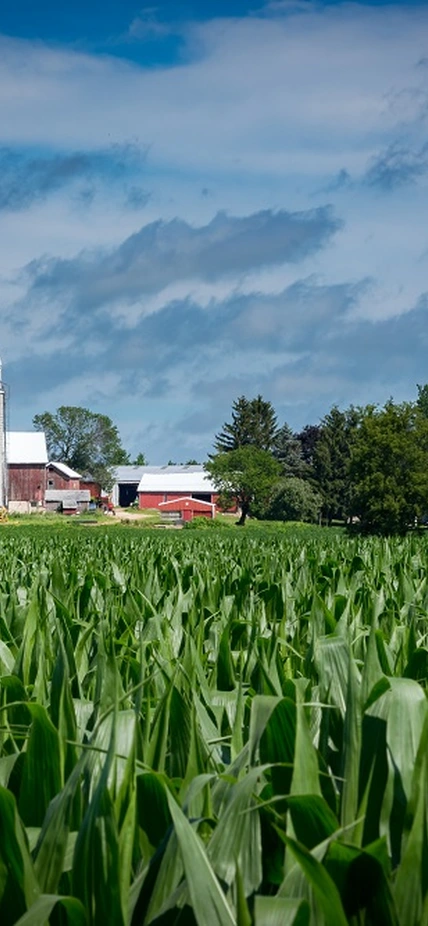Washington, DC—Models of the carbon cycle that are used to understand the effects of climate change in North America need to do a better job of accounting for the carbon dioxide removed from the atmosphere by Midwestern agricultural crops during the growing season, according to new work led by Carnegie’s Wu Sun and Department of Global Ecology Director Anna Michalak. Their work, published in AGU Advances, has implications for scientists as well as policymakers.
Plants are capable of turning the Sun’s energy into food using a physiological process called photosynthesis. They take up carbon dioxide from the atmosphere through pores in their leaves and, through a complex series of biochemical reactions, convert it into sugars. These energy-rich compounds are used by plants, animals, and microbes to support biological activities through a process collectively known as ecosystem respiration, and turned back into carbon dioxide.
Not only does photosynthesis form the backbone of our food chain, but by outpacing respiration, it also removes carbon dioxide from the atmosphere, where for centuries there’s been an excess of the greenhouse gas due the burning of fossil fuels and other human activity.
Understanding the spatial and temporal patterns of carbon dioxide uptake by plants is crucial for the accuracy of predictive models that ecologists and climate scientists use to reveal Earth’s complex systems and cycles and probe how they are affected by climate change.
“There are still unknowns when it comes to how much carbon dioxide plants remove from the atmosphere across different landscapes and in various seasons,” explained lead author Sun. “A matter of particular debate has been how much carbon is taken up during the warmer months of the year by agricultural land in North America as compared to temperate forests in the same region.”
So, Sun, Michalak and their colleagues set out to benchmark models of carbon’s movement through the terrestrial North American biosphere against data on atmospheric carbon dioxide recorded by a network of towers across the continent managed by NOAA and its collaborating institutions. The other team members were former Carnegie postdocs Yuanyuan Fang (now at the Bay Area Air Quality Management District) and Yoichi Shiga (now at the Universities Space Research Association); Xiangzhou Luo, Yao Zhang, and Trevor Keenan of Lawrence Berkeley National Laboratory; Arlyn Andrews and Kirk Thoning of NOAA; and Joshua Fisher of JPL.
“The models that showed lots of carbon being removed from the atmosphere by Midwestern croplands during peak growing seasons were the ones that best reflected the fluctuation in atmospheric carbon dioxide concentration data captured by the tower network,” Sun added. “And the models that were least aligned with the concentration data were the ones that predicted the most per-area carbon uptake occurring in temperate forests instead.”
They also found that models that are informed by remote-sensing satellite data were better predictors than models that did not.
“We recommend that all model developers use observations of atmospheric carbon dioxide to benchmark their work,” Michalak concluded. “Improving our ability to assess the path carbon follows from the atmosphere into the biosphere in North America will aid the work of policymakers and land managers.”
__________________
This study is funded by the NASA Terrestrial Ecology Interdisciplinary Science Award.
